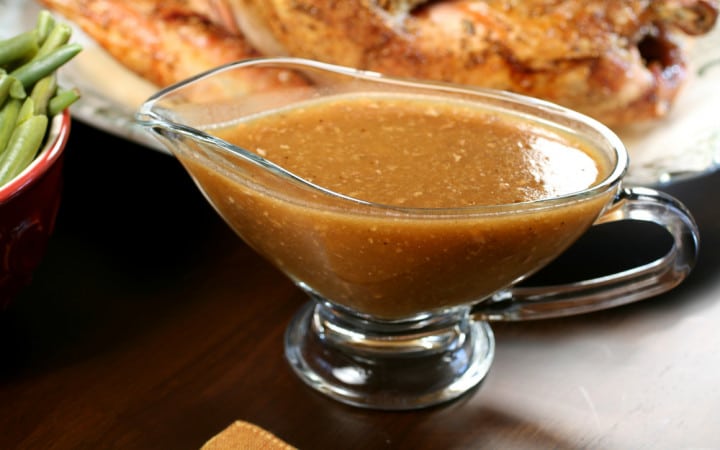Many sauces and gravies are based on roux — a mixture of flour and fat that is cooked over low heat. The color and flavor of a roux are determined by the length of time the mixture is cooked. White roux and blond roux are both made with butter or oil — the former cooked just until it begins to turn beige, the latter until pale golden. Light rouxs take from 5 to 15 minutes to cook. The fuller-flavored brown roux can be made with butter, pork or beef fat, lard or drippings. After being cooked, its color can range from deep golden-brown to mahogany-brown. The darkest roux, which takes on a nutty flavor, sometimes takes up to one hour to cook and it is most often used for specialties like Cajun gumbo.
A shortcut to a darker, more richly flavored roux is to cook the flour, stirring often, in a dry skillet or saucepan over medium heat until well browned. Add the fat (oil, drippings, etc.) and cook for three to four more minutes.
How to Make basic White Sauce?
A basic white sauce is made by stirring milk into a butter-flour roux. The thickness of the sauce depends on the proportion of flour and butter to milk. For 1 cup milk, use 1 tablespoon each butter and flour for a thin sauce; 2-tablespoons each butter and flour for a medium sauce; and 3-tablespoons each for a thick sauce.
When thickening a sauce or gravy with flour or cornstarch, always make a paste by first combining the flour or cornstarch with a little broth, wine, water, etc. Otherwise, you could end up with lumps of flour in the mixture.
Use a whisk when adding a flour-, cornstarch or other starch based paste to a hot liquid. Whisk the liquid rapidly while drizzling in the starch mixture and you will not get lumps.
Use the cooking liquid from vegetables or meats, or leftover pan juices as a sauce base. The liquid can be frozen until you need it.
Reducing a liquid (such as wine or stock) intensifies and enriches its flavor dramatically. Professional cooks use reductions as the base for sauces or as the sauce itself. To reduce a liquid, simply boil it until the volume is at least halved. Additions such as minced shallots or herbs are often cooked in the liquid for added flavoring.
Deglazing a pan creates an almost-instant sauce. Here is what you do: After food has been sautéed, remove it and any excess fat from the pan. Deglaze the pan by heating a small amount of liquid (wine, stock, etc.) in the pan and stirring to loosen browned bits of food on the bottom. Cook for a few minutes to reduce and thicken the liquid and drizzle over the sauteed food.
Give almost any sauce a satiny texture by whisking in 1 or 2-tablespoons butter just before serving. The same amount of heavy whipping cream also works nicely.
A sauce that begins to separate while cooking can be saved by processing the mixture at low speed in a blender just until smooth, about 30 to 60 seconds. Return the sauce to the pan and continue cooking over very low heat.
Add color to a pale sauce or gravy by stirring in a few drops of Kitchen Bouquet, which is readily available in supermarkets.
One or 2-teaspoons instant coffee powder or unsweetened cocoa powder adds both color and a rich flavor to sauces and gravies.
After stirring sour cream or yogurt into a hot sauce, heat it gently and only until the mixture is warmed through. Boiling will cause it to curdle.
Sour cream, yogurt and other milk products will not separate as easily in flour-based sauces.
For an almost-instant pasta sauce, saute 1 pound Italian sausage or ground chuck with one medium chopped onion until browned, drain off fat, stir in 16 to 24 ounces commercial spaghetti sauce, and cook until heated throughout.
Adding salt and pepper after a sauce is done allows for reduction (which intensifies flavor) and prevents overseasoning.
An over-salted sauce can be helped in several ways:
- Add a peeled raw potato, cut into eighths, stir and cook for five to ten minutes, then remove potatoes
- Stir in 1/2-teaspoon sugar, then taste, and add more sugar, a little at a time, if necessary
- One teaspoon vinegar added with sugar also helps balance oversaltiness
- Best idea: season the sauce just before serving to allow for other ingredients that may add a salty flavor, as well as intensified flavor because of natural reduction.
Read More: KetoCharge: The Best Keto Pill in 2022




